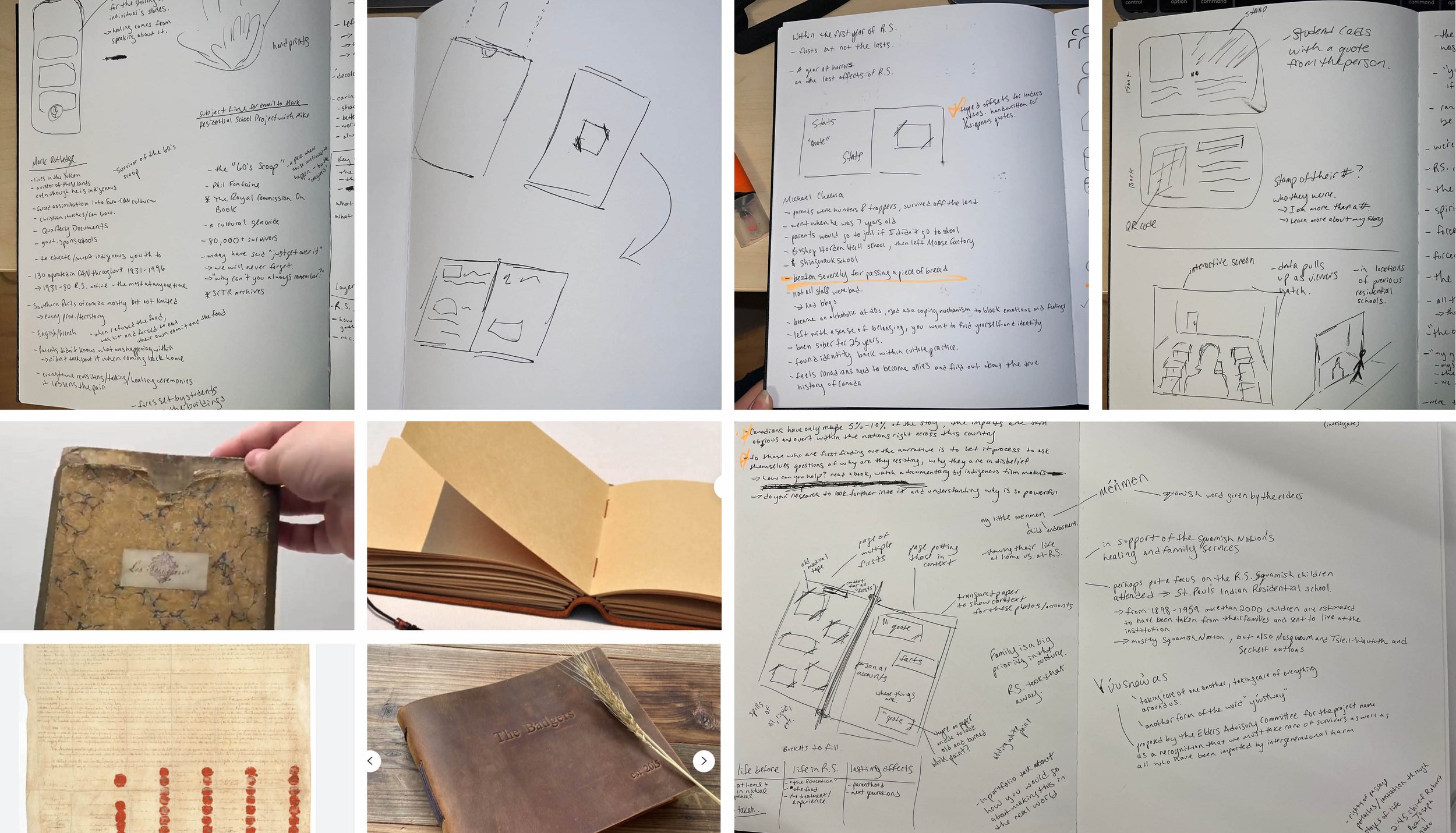Exhibit to educate about Canadian residential schools and give voice to survivors’ stories.
Scope
Undefined Artifact
Loosely-Defined Infographic
Timeline
1 month
Recognition
2025 WBDS Awards, Spatial Design: Cultural Spaces, Silver Award
2025 WBDS Awards, Visualization: Interactive, Bronze Award 2024 Graphis New Talent, Exhibits — Honourable Mention
2024 Communication Arts Design Competition, Student Work — Shortlist
2023 DesCan Ray Hrynkow Scholarship
2023 Applied Arts Student Awards, Social Responsibility Program
2023 #HeyRGD DesignThinkers Scholarship
2023 RGD Student Awards, Placemaking Design — Honourable Mention
2023 DesCan Salazar Awards, Interactive Design — Honourable Mention
Research, design and present an infographic about Canada’s residential school history
Challenge
I struggled during the process of this project due to the harrowing stories and information I learned about residential schools. Because of this, I wanted to make sure I approached this subject matter with the upmost care – for me to do so I dove deep into research before I would allow myself to go forward with a concept and design. During my research phase, it was important for me to obtain my information from indigenous organizations and archival government documents.
Through my research and attending Chief Robert Joseph's talk, I found that survivors continuously wish for non-Indigenous people to listen to stories shared and to educate themselves. There is power in sharing your story and healing that comes through vocalizing your experience and being heard. I am aiming to educate the public in order to honour survivors and the memory of those who did not make it home by giving them a voice.
“Information graphics can reveal the hidden, explain the complex and illuminate the obscure. Constructing a visual representation of information is not a mere translation of what can be read to what can be seen. It entails filtering the information, establishing relationships, discerning patterns and representing them in a manner that enables a consumer of that information to construct meaningful connections.” –Excerpt from project brief
Strategy
Using metaphor to represent the children’s lives that were cut short
Reviewing the Truth and Reconciliation Report was haunting due to the number of children documented and projected to have died as a result of these institutions. According to the Truth and Reconciliation Report, 2,800 children enrolled in Residential Schools never returned home. Murray Sinclair says the number of children could be thousands more – as many as 25,000. Moved by this, I designed wood panels (reminiscent of height markings on a wall) that capture the sense of growing up and the children’s lives that were cut short. Empty spaces on the wall serve as a visual metaphor for the children who passed but haven’t been uncovered or identified.
It was important for me to make a physical artifact as an addition to this project in order to show not only my skills as a designer, but to show my respect and care to the subject matter.
Solution
Exhibit experience to educate about residential schools and give voice to survivors’ stories
For the Children is my proposed concept for an exhibit in collaboration with the Indian Residential School Survivors Society and Sḵwx̱wú7mesh Úxwumixw (The Squamish Nation) – in support of the programs they have in place today for survivors and those impacted by intergenerational trauma. These organizations’ goals are for unity and teamwork in the community towards a common good. This is the value I wish to uphold through educating the public with my proposed exhibit. The exhibit is targeted to educate early-late adults on Indigenous culture, the residential/day school system, impacts today, and what moving forward looks like in reconciliation in Canada.
With the gifted word from elders within Sḵwx̱wú7mesh Úxwumixw, I encourage the audience to reflect on the values of Yúusnewas – taking care of one another, taking care of everything around us. This exhibit is intended to encourage empathy for the children who did not make it and for survivors today to ensure we listen, lift each other up, and make sure this never happens again.
For the Children has a focus on elements of humanity and nature, incorporating deep layers of information about the children within these institutions and the survivors.
"I was called 'Hey 39. Where's 39? Yes, 39 come over here. Sit over here 39.' That's the way it was… I was 39."
– Bernice Jacks, Survivor
“Infographics, because they use a combination of images, words, and numbers, operate in a hybrid system of both the verbal and the visual. Consequently they offer us the greatest opportunity to increase the effectiveness of communication.”
– Excerpt from brief
Moving forward in reconciliation requires an ongoing dedication to understanding Indigenous history and the work that needs to be done for local Indigenous communities today.
Visit www.nctr.ca for valuable resources and information on truth and reconciliation.
Takeaways
Research
Being able to apply deeply involved research and build a full understanding of the subject matter is crucial to the success of a project – a process that requires time and attention. Rushing through this integral discovery stage risks compromising the integrity and depth of the design process. Dedicating time to be thorough in my research lays the foundation for more informed and impactful design solutions that resonates with project's objectives and target audiences.
Get Engaged
Immersing yourself in different activities expands your perspectives and deepens your understanding of the world, ultimately enhancing your skills and value as a designer. It was serendipitous timing for this project in particular getting to listen to Chief Robert Joseph’s live talk at the Vancouver Public Library. Going out and involving yourself allows you to create meaningful connections with your audience that secondary research just simply doesn’t achieve.























